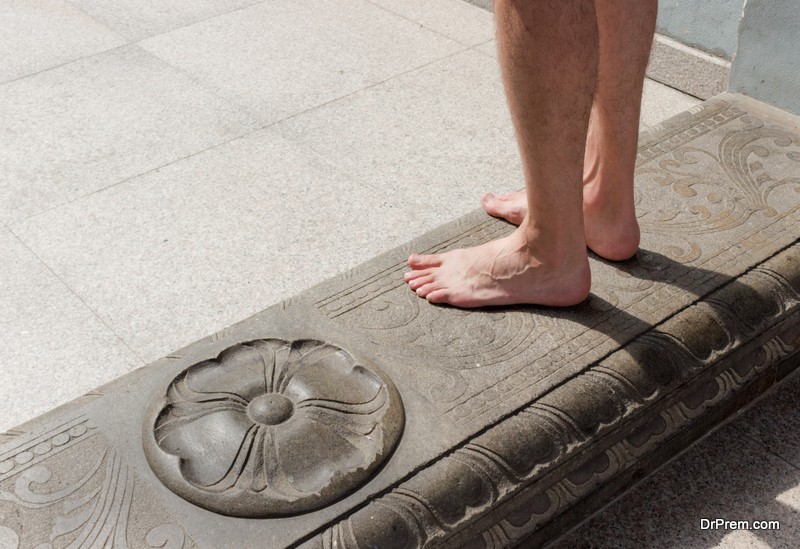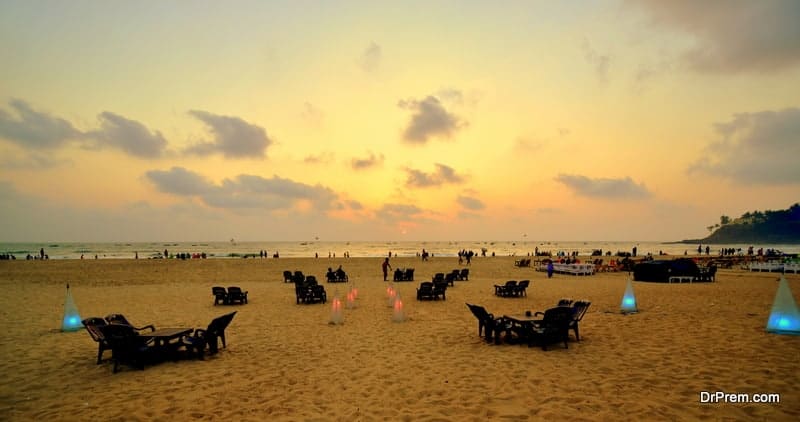It is his instinct that has driven man over long distances since thousands of years in his religious pursuits. That Lord Buddha in his prime career point had denounced worldly pleasures in quest of the eternal knowledge or ‘Nirvana’ is nothing, but a bright instance of religious tourism setting a historical landmark.
A Complete Guide to Religious Tourism by Dr Prem- History, Essential Components, Best Practices, Planning, Destinations and More
-
What is religious tourism?
-
Why Religious Tourism Matters?
-
Supports revenue earnings
-
Meets spiritual needs
-
Is Religious Tourism for You?
-
Key Drivers of Religious Tourism
-
Essential Components of Religious Tourism
-
Sacred site
-
Fairs in Religious Tourism
-
Priest and clergy
-
Accessibility of the religious site
-
Weather and landscape
-
Basic infrastructure
-
Travel companies and agents
-
Cross-border religious interactions
-
How to get more information on religious tourism
-
Preparations for religious tourism
-
Importance of planning in religious tourism
-
Budgeting in religious tourism
-
Travel and tourism arrangements in religious tourism
-
Activities while on religious tourism
-
Broadens cultural horizon
-
Best Practices in Religious Tourism
-
Need for improved sanitation
-
Setting up improved infrastructure
-
Dos and don’ts while on religious tourism
-
Things to do post religious tourism
-
Countries promoting religious tourism
-
Santo Domingo, Dominican Republic
-
Jordan
-
Greece
-
Italy
-
Thailand
-
Precautions and preventions in religious tourism
-
Be aware of self-proclaimed god men and guides
-
Stay safe from thugs and pickpockets
-
Check the hygiene standard of ‘Prasad’ before you consume
-
Be courteous with offerings
-
Be sure of photography rules
-
Do not pull out any part of an ancient ruin
-
Do not litter
-
Popular Religious Tourism Destinations
-
Best sites and Top Destinations for religious tourism in the world
-
Ganga Varanasi
-
Mecca, Saudi Arabia
-
Lhasa, Tibet
-
Bethlehem
-
Vatican City, Rome
-
Haifa, Israel
-
Our Lady of Guadalupe Shrine, Mexico City
-
Sabarimala, Kerala, India
-
Grotto of Lourdes, France
-
Tomb of Imam Reza, Mashad, Iran
-
Jerusalem, Israel
-
Meiji Jingu, Tokyo
-
Mount Tai, Taishan, China
-
Jasna Gora, Czestochowa, Poland
-
Destinations that offer safe religious tourism for senior citizens
Religion has influenced and shaped man’s thoughts and philosophies since the dawn of civilization. Man’s journey in quest of religious ideologies began since then. The exodus of the Jews in search of the Holy land has become a legend and finds an important place in Biblical reference. The parallel tale runs in the Torah, the holy book in Hebrew. After the death of Joseph, the Jews fled the enslavement and torture by the Egyptians. Moses, the Jew leader guided them towards the Promised Land.
Whether the Jews accomplished the long cherished desire that inspired their journey is open to debate, but the long journey they undertook was a fact paved with obstacles and done amid wilderness. Some of them did not stop in their promised land. Legend has it they moved on towards east traversing the west -east length of China and turned south into Burma.
Thereafter crossing the Burmese border, they entered India, and finally settled in the area where the states of Mizoram and Manipur are located. The migration started 6000 years back, and the present day Mizos and Kukis call themselves the ‘Menashes’, the descendants of the lost tribes of Israel who started the exodus. History stands as a testimony to this mass migration over enormous distances through hardships and dangers in religious pursuits.
What is religious tourism?

A spiritual summon to a site of religious fame initiates religious tourism. The visit to legendary shrines and temples is considered the holiest of the holy acts a tourist engages in his life span. It is more than just a visit but is a spiritual quest. It is driven by faith, an ardent soul-searching mission at the altar of God no matter what form of religion does he advocate.
The expedition may be in large groups or people may travel on their own all alone accompanied by a powerful impetus from within to find security and justification to his religious beliefs and ideals. It is a pilgrimage where focus is more on the spiritual drive and to be in oneness with the almighty rather than running in pursuit of material pleasure.
For many, religious tourism becomes one of life’s prime targets. Without this goal realized the journey from birth to death remains incomplete and unfulfilled. There are instances where the devout and the faithful have mobilized all the resources acquired during lifetime to meet this goal of great significance.
It is this sacred target towards which his brief stay in this world is directed at witnessing events and incidents beyond explanations offered by logic. It is this goal towards which he had strived all his life and without which life becomes meaningless.
It may be an act of penance, a search for self-actualization or an expression of profound reverence towards the creator that has instilled the desire for religious tourism in him. However, religious tourism has shifted its emphasis and mode from what it used to be centuries back.
No one travels on foot over long distances any longer. Customized travel has invaded the scene with fast jet liners and long cruises across seas coming up. Travel agencies and trouble-free tourism arrangements have walked in between.Religious tourism had become customer friendly with the elimination of hazards and pointless hardship so that the faithful may concentrate on his religious mission with more focus and collected devotion.
The annual Hajj pilgrimage in Mecca in Saudi Arabia ranks top at the helm, in the sector of religious tourism. It is an amazing sea of human congregation belonging to Islam gathered together with a devout mission. The world has famous religious tourist destinations built around different religious beliefs of Hinduism, Islam, Christianity, Judaism, Buddhism and Sikhism to name only a few among the most important and awe-inspiring sacred cults.
Wonderful and imposing religious monuments,mosques, temples, shrines, cathedrals, gurdwaras and Jewish synagogues have fascinated tourists around the world. The splendid architecture and the divine vibes have conjured up the right mix of appeal that the tourist literally feels the presence of the Almighty. It is an attraction strong enough to draw tourists from all over the world with a religious zeal beaming about them.
Religious tourism can be classified under the following broad heads like Faith oriented expedition camps, holy pilgrimages, missionary travels and leisure holidays. Based upon statistical data supplied by World Tourism Organization, the world’s most important religious destinations see an approximate visit by around 300 to 350 million pilgrims annually.
Fundamentally, the entire global population can be grouped under pronounced banners of specific religions leaving out a negligible proportion of non-believers, pagans and animists. The desire for being in a divine unification with the almighty is very basic. In one point in life this quest becomes overwhelming resulting in the need to make a trip to a religious site of worldwide fame.
Jerusalem for the Jews and Mecca for the Muslims inspire as much religious attraction as does Varanasi for the Hindus and Vatican for the Roman Catholics for that matter.
A specific feature of religious tourism is rather than having an evenly spread crowd over a year. These sites see expeditions linked with anniversaries, dates of births of prophets and legendary messengers from heaven. Ages back, the travelers to holy sites had been termed as pilgrims, but a modern-day tourist may not be in search of spiritual attainment. The religious sites simply pull him on with its historical importance and mythological significance.
From the standpoint of being a revenue earner to a country’s tourism industry, religious tourism niche offers contributions at a commendable scale. For instance, the annual Islamic Hajj brings in around $ 16.5 billion to Saudi Arabia’s exchequer, which is roughly close to 3% of the country’s GDP. Holy visits to Balaji Tirupati temple in southern part of India pour in heaps of gold donated by the devout tourists to the tune of several million dollars. Religious tourism is thus a pillar of strength for a nation’s economy.
Why Religious Tourism Matters?
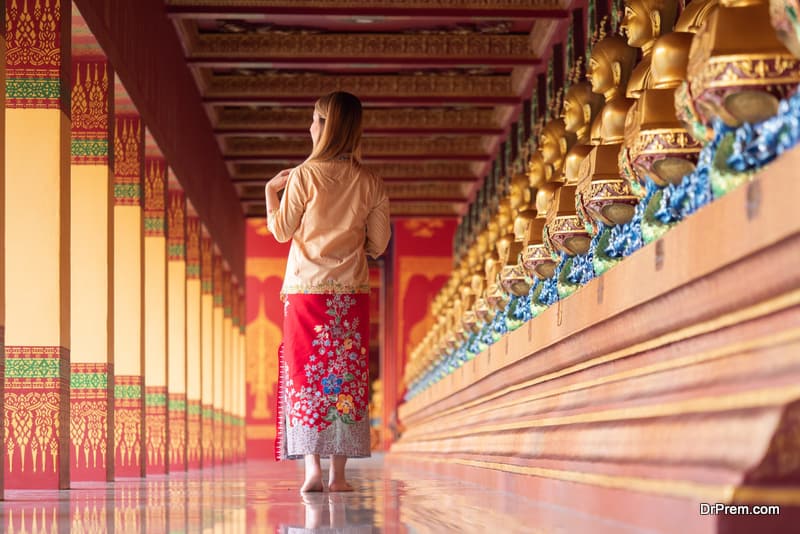
Religion is one of the most powerful expressions of faith that builds our inner core. People get hurt and seriously offended when confronted with criticisms pointed towards their religion. Reservations and discriminations based on religion are dangerous and a barrier against unification, a quest for peace and harmony with which different components of a society would operate.
It is imperative that we know each other in terms of faith and religion. Mutual existence with absolute ignorance about our neighbor’s religion is undesirable. It is possible that we may inadvertently engage in an act that is detrimental to another religion. It hurts the sentiments and forms a fertile ground for a brewing communal discord. It would just need another act in the same direction for the dormant feelings of hatred and mistrust to flare up.
Religious trips are wise steps towards resolving these differences based on faith. Here, of course, cross religious tourism is intended where tourists are from random religious backgrounds, and they similarly select religious destinations at random for a visit and pay respect to the sacred site.
Supports revenue earnings

From the economic point of view, religious tourism is a great revenue earner. It generates employment at the site and leads to the growth of ancillary business connected with religion promoting general upliftment of the economy of the religious site.
Meets spiritual needs

Trips to religious sites answer our spiritual needs. The frantic rush, the neck to neck rivalry to survive in this world and the mounting tensions often leave our mind and body shattered. We feel the necessity to unwind. We need a quiet getaway to establish a contact with the divine entities, and religious destinations offer an ideal backdrop. It gives us a feeling of security and immense satisfaction relieving our pains and tensions. At least, you have now shared your secrets with someone you believe to be almighty. A soothing spell overwhelms you relieving much of your material world based tensions.
Broadens cultural horizon

Religious tourism opens you to cultural and religious marvels of a civilization. The amazing designs and carvings, which adorn a place of worship exposes you to the rich heritage and mythological connotations connected with the religious site. This is greatly educative, and you marvel with stupefying bliss at the realization that whatever might be the color and banner the essence of all religion is fundamentally the same. This is a great realization, and you find answers to the apparently inexplicable queries you had been shooting at yourself with no answers.
Religious tourism matters as it is a route to spiritual upliftment. It liberates you from the regular chores of mundane life, which at times pushes you to the verge of mental tiredness. It is a refreshing change, and your mind needs fine tuning and religious tourism exactly strives to give you the same.
Religious tourism is essentially a spiritual sojourn. It is a passionate quest of objectives focused on a pragmatic rise above the routine humdrum achieving to get transparency in eternal riddles of life and death. Religious tourism commands a major share of the tourism industry in general sustaining visits to holy places by groups of pilgrims fired by faith.
Adoption of a religion and following it with single minded devotion is a journey in itself. It aims at the spiritual progress we make during our span of life, our journey after life and the eventual control over our mind. Our acts are all governed by how the mind behaves. A disciplined mind is always on alert. It can differentiate between the good and evil and helps us to choose the right path. In religious tourism also the idea is to proceed beyond the routine and dull everyday existence and reach a target of self actualization. Religious tourism inspires you in this mission.
Great journeys have always helped propagate the spread of faith and achievement of true knowledge. It makes our lives meaningful and absorbed in a concrete goal, which is eventually spiritual in nature.
Is Religious Tourism for You?
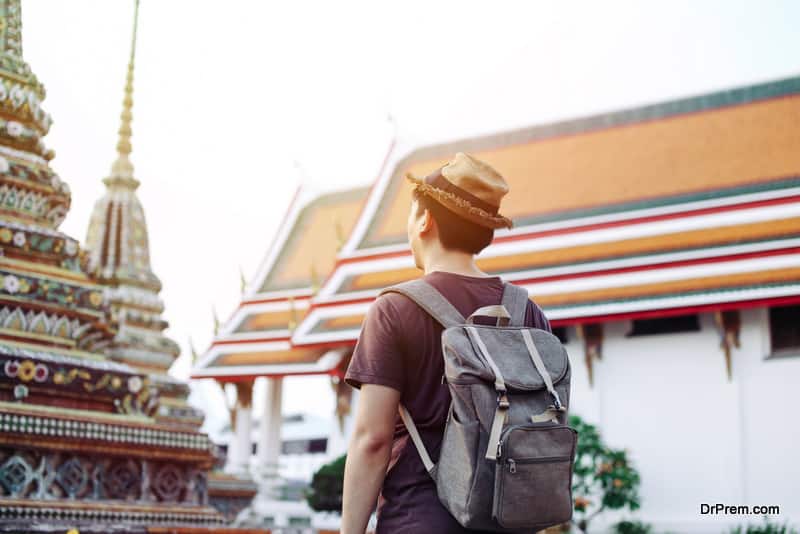
At the negative extremity you may not be religiously inclined, but still the destinations of religious fame may hold an extraordinary charm that you fail to resist the temptation. Just think about the Vatican, for example. What an awe-inspiring piece of architecture waiting for you to throw you off your breath. No words no matter how enticing they are could replace the stunning enchantment gripping you head to foot as you stand under the sky confronted with the imposing piece of marvel amid the heartland of Christianity inspiring faith and reverence.
The holy sites of St Peters Basilica, the Sistine Chapel and the Vatican museum hold some of the world’s most stunning paintings and sculptures. They keep the tourists taut and engrossed. The air is infectious ringing with a sacred tone. The chime of the cathedral bells, the communion and the masses are hard to overlook. It brings forth the faithful inside you.
You literally feel an atmosphere of perpetual bliss. There is something wonderful and sublime in it placed much above material happiness.Good food, the headiest of drinks, nice charming scenery, the strong appeal of an ultramodern city and historical sites decked with rich cultural heritage are cynosures powerful enough to draw tourist attention.
But a spiritual expedition to a holy site is certainly a cut above the rest. It touches the highest level of your consciousness. It showers upon you loads of ‘good feel’ and blessings achieved through a sacred rendezvous with the creator himself. It is a solitary retreat, a sojourn into the realm of eternal peace. This amazing religious exposure significant if not more than your pleasure pursuits which are mere physical and short lived in character and essence.
It is immaterial whether you are an atheist or not. The simple fact of just being amid an environment charged with overwhelming religious overtones, prayers, chants, hymns, masses and arresting rituals instill in you a strong realization that a second world might exist, which is far more imposing and where justice is delivered with speed and precision and ‘Karma’ is reciprocated as fallout of your mortal deeds. The lure of this eternal truth is hard to overlook.
Religious tourism is an attempt to find the answers that had been baffling you all your life, and it is certainly a constructive attempt well worth a try. Religious tourism has a lot more to offer you besides warming up your highest strata of consciousness. Emphasis is not only put on the spiritual quest. The religious tour destinations are testimonies of ancient relics, splendidly designed places of worship, history of evolution of different religions, faith based on turmoil and strife.
Historical sites where legendary crusades have erupted where thousands of fanatics have laid their lives defending their religious dogmas. This would certainly fire your interest drawing you to those holy sites which finds a modern day witness in you. Growing around the religious site there are sources of secondary attractions as well.
Vendors hawk their merchandize ranging from beautiful pieces of replicas, souvenirs and art work. Wonderful carvings of Christ on crucifix plaster models of saints, pendants, armlets, framed paintings of Hindu deities, statues of Lord Buddha and other sacred objects of artistic value are put on sale.
Incense stick packs and powdered sandalwood and wood pieces bring forth a sweet fragrance somehow having a sacred overtone of divinity. These are well worth a buy and later may be put on exhibit enhancing the aesthetic atmosphere of your private worship room back home.
From the angle of infrastructural set ups, religious tourism has become a lot more customer friendly. You have the experienced travel agencies with smooth and efficient service. Smooth travel in airways put you right on your holy destination. The back flight puts you back in your home pondering over the wonderful trip you just had.
Comfortable accommodations ensuring a cozy stay and good dining arrangements await you making your trip smooth and wonderful. Transportation is round the clock accommodating the tourist needs during pilgrimage rush.
The entire journey is satisfying with all these facilities waiting in the pipeline and with God himself on the other end, I don’t see a reason why should you stop and hesitate to launch your religious tourism itinerary.
Key Drivers of Religious Tourism
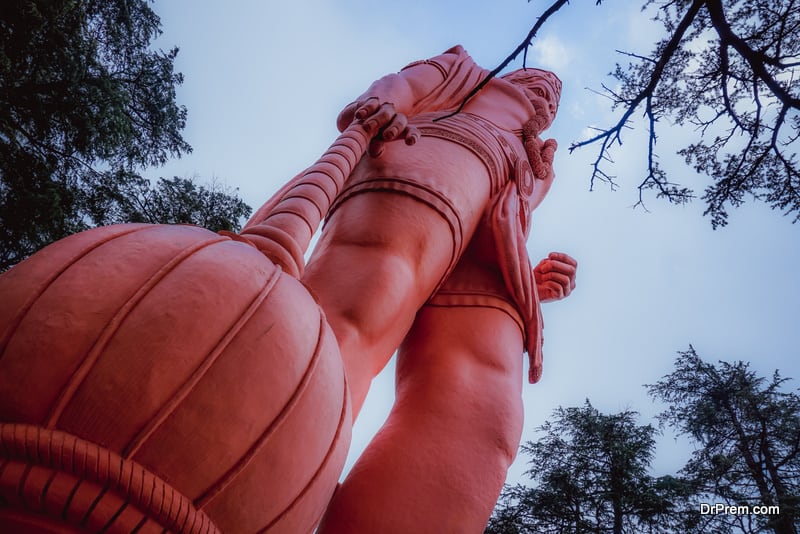
The most important driving force to inspire religious tourism is the intensity of faith. A religious site is a destination looked upon by tourist with great awe and respect. At times, scientific explanations and logic fails answering a crisis. Seeking a solution at the altar of god seems the last resort. This infuses hope and a need for a sacred trip inspiring religious tourism. The key driver for religious tourism comes in existence, and the tourist starts making arrangements for the trip.
It is important that the picture built in the mind of the tourist must not get tarnished by corruption and mean designs at the religious sites that exist making religion a trading commodity. The contribution of the society down the ages towards making a destination a seat of religious heartland is considered a key factor.
The role of the kings and monarchs merit a mention in this context as well. Many of them were great patrons of culture and religion. They are remembered as great exponents of temple design and architecture. The splendid eloquence in stone and the intricate carvings that give amazing ornamentation to temples, churches, mosques, synagogues and gurudwaras are features of definite attractions.
They drive in tourists in large numbers apart from the divine atmosphere, encapsulating the environment of the religious site giving it a dimension far above the mundane affairs of regular routine life. What puts a holy site on the tourist map is the grandeur of the place of worship.
Legends and epics that run back in time explaining the origin of divine significance would be an added bonus. It is a sure shot driving force responsible for putting a site on the popularity bar of religious tourism. Sometimes the hostile nature of the terrain, the long flight of steps, the wilderness and the harshness of nature and other obstacles you need to surmount and those that eventually leads you to the place of worship you are looking for enhances the appeal of your quest for religious tourism.
It is a state much akin to attainment of ‘nirvana’ or the eternal knowledge of enlightenment and eventually the nearness to the almighty. You achieve this after a hard penance and dedicated endeavor. This is something very satisfying and is certainly a key driver inspiring religious tourism among people.
Sometimes the religious tourism sites feature mammoth and yet graceful sculptures of deities as is seen in the statue of Vardamana Mahaveera, the founder of Jainism or the gigantic statue of Hanumana, the monkey god of Hindu mythology.
These are awe inspiring structures occasionally cut out from monoliths and consecrated with sacred water, milk, coconuts, vermillion, flowers and other offerings to the accompaniment of chants laden with passion. The high priest scales up the giant scaffolding to perform the religious round of rituals to the delight and reverence of thousands of devotees gathered below. These indeed are key drivers inspiring religious tourism.
Support and patronization by the government of a nation towards religious tourism is another key promoting religious tourism. Financial assistance to pilgrims, upgradation of infrastructural set ups and efficient management of pilgrim rush by deploying state administrative machinery are distinct key drivers in this direction.
The Saudi government provides financial assistance to help Muslims abroad to fulfill their lifelong dream of attending the Haj. Similarly, there is airways fare subsidy known as Haj subsidy, which is on offer to the Indian Muslim Haj pilgrims way back since 1973.These are definitely positive steps initiated and can be termed key drivers inspiring religious tourism.
A key driver that can become a deciding factor for the future of religious tourism is cleanliness and hygiene. Tidier the place of worship more will be the tourist influx. However, quite paradoxically many religious destinations in India cleanliness are an exception.
Flocks of poverty-stricken paupers and vagabonds are seen around religious sites. Extreme poverty has driven them in an effort to collect alms from the pilgrims making the entire site shabby. This is thought provoking and a very sensitive issue as well infringing the borderline between expunging the embarrassment born out of poverty, filth and morbid misery in one hand and the sensitive issue of denying human rights on the other. However, this issue is indeed a driving factor having a bearing on the volume of tourist visits to a religious site.
Essential Components of Religious Tourism
Sacred site:

The most important unit of religious tourism is the sacred site itself. The stronger its connection with legends and myths anchored to the past greater is its tourist value. Places connected with the birth or arrival of religious men and ‘Avatars’ into this world gives the site a sacred appeal and is an important component. Specific details meticulously preserved and propagated in connection with the lives and activities of religious men justify the sacred worth of a site.
Details relating to the horse stable where Lord Christ had been born, the sacred tree where he attained enlightenment, the legendary garden where he played in his childhood, fought and defeated the evil forces are all essential components that raises interest and inquisitiveness in the minds of tourists and becomes a place of massive tourist attraction and can rightly be considered important components of religious tourism.
Fairs in Religious Tourism
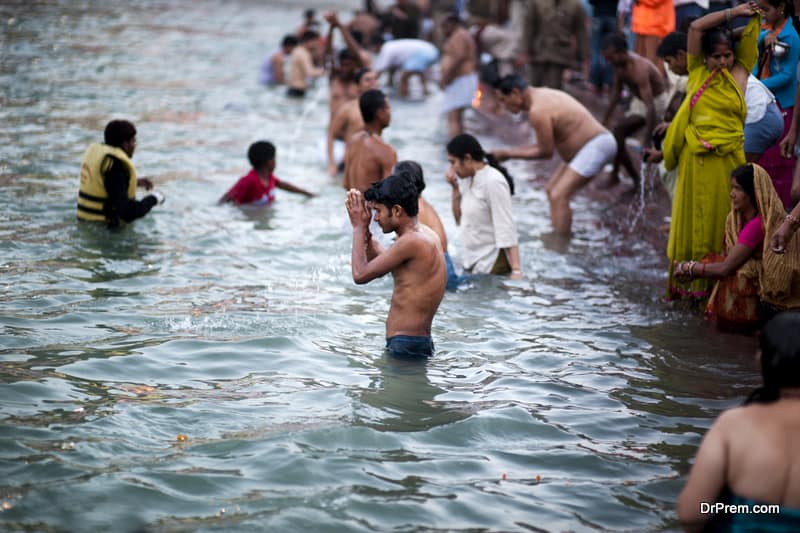
The secondary attraction that blooms around the religious site are ancillary business and the infrastructural developments connected with the religious site are important components too. Wonderful fairs or locally known as ‘Melas’ in India is an amazing mix of crowd vendors, amusement rides, clay models and other ingredients depicting the various stages of lives of saints, lords and prophets, eating joints, dips in sacred rivers and lakes, bizarre and yet curiosity inspiring rituals, devotional songs and a lot more arresting features constitute the essential components of religious tourism.
Priest and clergy

The priest is the key figure. He is supposed to know all about the customary rituals and sacred rites that are the essential features in worship. When it comes to religious tourism, the priest is the ultimate person in charge. He is your friend, philosopher and guide. He is supposed to show you the gates of heaven and make you accomplish your mission with a happy and fulfilling note. Hence the role of the priest constitutes an important component in religious tourism.
Accessibility of the religious site

The attitude of the locals and the reverence and importance they attach to the religious site located in their country is important. So far as the infrastructural component is concerned, the mode of access to religious sites plays a significant role. Transportation to the sacred locations has a key impact. It should be safe, cozy, regular, and reliable and the trip expenses must be within the means of an average tourist. In a nutshell, it should fit into the requirements of all kinds of tourists belonging to a wide range of economic bracket. Accommodation demands attention as it is equally a significant component as is transport. Needless to say they should be safe and comfortable, and should answer the needs of tourists belonging to different social standings.
Weather and landscape

Other essential components of religious tourism encompass several aspects like pleasant weather, exquisite landscapes to inspire the secondary desire for sightseeing, local administration, legal redressal cells and tourist safety.
Basic infrastructure

Basic amenities like uninterrupted supply of power and water, general standard of hygiene and the availability of experienced and trusted guides and medical facilities are all essential components favoring religious tourism.
Travel companies and agents

Travel agents and tour operators constitute chief components of religious tourism. In absence of their valuable service and guidance, the trip to religious site may not be an impossible assignment, but definitely it will be a difficult task. It will be like going on an aimless cruise. The consequence will be a waste of money and time. More importantly, you will never know what to look for. After completion of the religious mission, a realization may strike you that many places, which merits a visit has been left unexplored.
Cross-border religious interactions
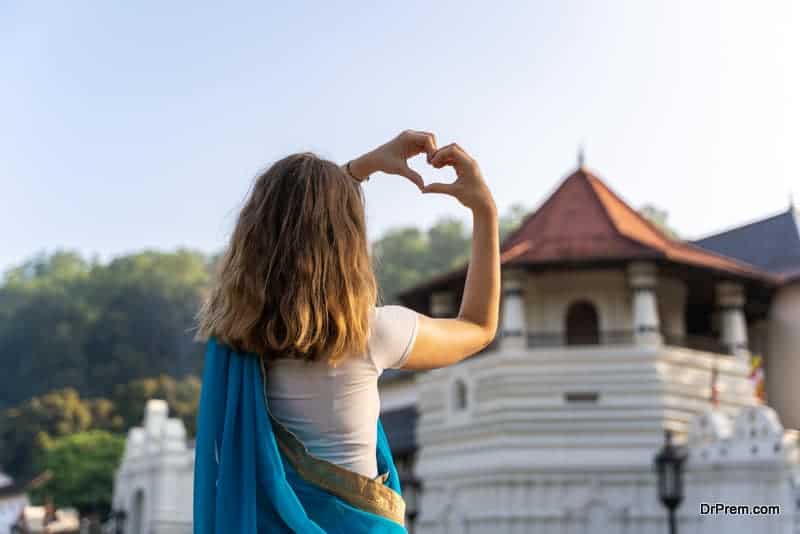
The socio-religious interface and the interaction across the boundary between the tourists and the local residents are important components as well. Literature on religious myths, epics, the Vedic texts, the Holy Bible, the Holy Quran, Bhagavat Gita, Zend Avesta and other informative and illustrative books on religion and the teachings of saints and prophets forms the core of religious tourism. It is true these texts do not necessarily exist only in the religious sites in question, they can be read at leisure sitting back in your home but nevertheless they are the initial sources making you aware of a particular religion and its sacred features. These books instill in you a desire for religious trips and may be included as one of the essential components of religious tourism.
How to get more information on religious tourism

Religious tourism and pilgrimages are as viral as religion and its concepts themselves. Announcements on sacred trips get spread through print and electronic media like wild drumbeats rounding up the faithful for his sacred mission. Religious tourism is often confined to a particular season.
News regarding trips, weather report, the likely size of the pilgrims and infrastructural facilities are all informed well in time. The popular media are usually the newsprint, the internet and different religious forums and groups.
In websites developed by the Bureau of Tourism of different nations, a compilation of information touching vital areas like which season to visit the holy sites, type of accommodation available, financial grants if available for enhancing sacred tours and a number of other relevant factors having a bearing on religious trips are brought to the notice of interested tourists.
Faith based tourism has much to do with the flow of emotional tides. The faithful has a kind of committed mission. The need to accomplish his sacred voyage is much stronger than any other form of tourism. Large religious gatherings fed on long marathon sermons conducted by eminent religious heads instill a fiery passion into the hearts of the devout.
The preachings are often based upon events and anecdotes having historical significance. A touch of miracle or incidents bordering on the supernatural puts sufficient stimulant and that vital piece of information strong enough to goad the tourist to prepare for a religious trip. Incidentally, there are websites solely devoted to religious tourism. Such a website is www.grouple.com for sourcing information on holy missions.
One specific factor that drives millions of tourists towards a religious site is information on miraculous healing of an incurable disease. Dreadful ailments stand undefeated challenging the latest and the best of the medical treatment that money can buy.
The wealthy sufferer is surrounded by a board of the best medical wizards and yet he may have been in grips of a long and painful physical disorder that baffles even the doctors. His confidence gets shaken, and he starts believing in miracles and cures done through sacred voyages to a holy site. One successful faith healing therapy would just add fuel to the flame of devout faith. The news spreads like wildfire bringing in hordes of tourists, and the site comes under limelight as a famous religious destination.
The power of faith healing is strong enough to spread a wave of pious zeal among people, and the natural consequence is assemblage of believers at the sacred site conjuring up miraculous remedies for incurable diseases. A common feature facilitating the spread of information on religious tourism is initiatives sometimes taken by god men or the propagator of faith themselves.
They tour from city to city drawing the attention of the gathering towards the religious significance of a site and the entire benediction achieved from visiting it. This type of mobile faith camps are very effective and can become a storehouse of religious information for tourists driven by a fiery religious pursuit.
Preparations for religious tourism

It is not like that you get inspired by some supernatural dreams and set out on a religious voyage. You can always launch a religious trip and you don’t need to tune up to a proper mindset always. It is open to all and anytime you can set out for your desired trip. However, certain sacred trips are seasonal like Haj for the Muslims and Sabarimala Ayappa trip cum trek of Kerala in India.
First and foremost preparation you need is to choose a religious site and get all the necessary updates like the location of the religious site, the right time to make a trip, the general ambience in and around these sacred sites, existence of any taboos and a general awareness about the local customs. A major chunk of your preparation time would go in locating a resourceful tour operator with a good track record in this form of tourism.
You may use the internet search engines and find one choicest destination at your leisure. Else you need to track the advertisements given in the media by the operator including the range of service offered in addition to the target of meeting chief religious quest that the customer is seeking. After a satisfactory survey, you select the tour operator and establish contact with your selection. You get an approximate estimate of your budget estimate a major portion of which would include the tour operator’s fee.
On having communication with the tour operator, try to get a thorough detail of the exact range and quality of services promised, and if feasible try to take out a documentation of the same. The search information on religious tourism focuses your interest on subsidies extended by the government. The government of your destination country as well as your own often encourages religious tourism among a particular community. If you fit the bill, then why don’t you avail the opportunity in the first go?
The location of the country and the season during which you would do religious tourism have a bearing on what type of apparel you are going to put on. If you are visiting in cold season, needless to say you need warm clothing and just the reverse if you venture during the scorching months. During heavy showers you need to wear water proof jackets and footwear. Know beforehand the accommodation where you are going to stay and its distance from the holy site. This would help you further in planning on various issues once you reach your destination.
As in any other niche tourism, it is a must you carry medicines and packaged water. Take your photography kit for catching the pictures of awe-inspiring temples, mosques, churches and other amazing sacred monuments of great cultural significance. Take as little liquid cash as possible and better rely on your bank cards. If you are planning your trip all alone without the service of a tour operator, your preparatory exercise multiplies. Right from booking your both way flight tickets, you need to fix up your hotel much ahead, and circumstances of your destination and your trip in particular will dictate your future preparatory action.
Importance of planning in religious tourism

More the time spent on concrete planning lesser the hassles you are going to encounter while on religious tourism. However, your trip planning premises must encompass a wide range of factors some of which are static stipulated by an agreement. Just for an example, the grade of accommodation waiting for you would certainly rest on the price tariff and must have been booked by your tour operator before you fly abroad towards destination. Still there are factors that are variable in nature or subject to last minute changes.
Through upgrading yourself through the internet, you may have a fair idea of the local transportation network, but how the network would work in your favor is beyond the horizon of your foresight. You need to update yourself on various fronts pertaining to your destination of religious tourism. You need to support your line of planning with these information updates in order to make it workable and give it a meaningful shape.
Planning gives a finite direction to your religious trip. Without a feasible itinerary drawn up, you will be at your wits end unnecessarily losing money and time. To your utter disappointment, you may figure out you haven’t covered even half of the religious site you intended to visit despite all the trouble taken wasting all those precious time and money. Had you have given more emphasis on your planning exercise your trip would have been more gratifying.
Budgeting your religious trip is an inseparable part of your entire planning process. Without your trip expenses properly figured out everything would look shrouded in mist.
Your planning for religious trip should be based on the number of days you are going to spend in your destination. This is very important as your entire tour budget rests on this. Your hotel and restaurant bills, local transportation costs, consumption of supplies and other expenses would run proportionate to your duration of stay. Therefore, accurate time estimation forms the foundation of your planning.
In several religious tourism sites, the ultimate gratification lies in having a rare glimpse of the deities, legendary idols, figurines and sacred relics housed inside the shrines. Viewing these holy sites quite often calls for stiff competition from your fellow tourists. This requires a very meticulous exercise and planning in advance.
Lots of tourists cram into the place with the same motive as yours. ‘Darshan’, the other word for sanctified viewing the sacred Jagannath temple in Puri and Balaji temple in Tirumala hills, both located in India are typical cases in point. It is often a tough task for the temple administration to tackle the huge crowd peacefully especially in the peak season.
You have no way than to seek the help of a local guide to get an easy access to the place to get the blessed sight. This is another very important part of your planning without which your sacred trip would remain very much unsatisfying.
Budgeting in religious tourism

Like planning other niche tourism, drawing a financial estimate of the outlay for your religious trip forms an important component of the program. You need money for every step you move ahead in your sacred pursuit. But you got to know the mark of demarcation between prudent spending and wastage of your expensive dollars dedicated to your religious mission. You need to identify the key activity drivers having a bearing on your religious tourism.
Typical areas which would tap your resource would be the up and down flight from your residence to the religious site. Your efforts should be focused on adhering to your dates of flight booked well in advance to avail flight fare discounts.
Your accommodation rental would certainly feature in your tour budget consuming a substantial portion of it. A good practice would be to have a very clear and visual picture of the hotel you are going to stay in and for which you are going to book your room rental.
Information as regards offseason discounts should be kept at fingertips and discounts to be availed in the first chance. Here, you stand to save and create a favorable impact on your budget. You save some extra bucks from the rebate that may stand by you in unforeseen circumstances.
As regards local transport in and around the religious sites, better option would be to avail inexpensive city buses and intercity trains. They are cheap and reliable and better than expensive cabs. Moreover, in a bus or train you have co passengers by your side to combat a common problem that you may face. But in a taxi ride you are totally at the mercy of the cab driver.
Many religious treks are done on foot and would curtail your budget further down. It is a pretty common experience to remove your footwear every time you enter a place of worship. Heavy investment in hiking boots or high end sneakers would be a folly. Every now and then you will need to remove them prior to entering a sacred temple or mosque. This would be an annoying ordeal. Inexpensive slippers would be a comfortable solution.
Religious tourism usually goes on a modest note without much fanfare about lavish servings of food and drinks. You may tighten up your fiscal outlay so far as food and ale is concerned and save your stock of money on activities directly connected with visits to places of worship.
Much of your worries and plans relating to budgeting get shared if your trip is done through travel agencies. However, the most important question is to get a crystal clear idea of what would be the exact services covered by your travel agency within the price package offered.
You need to keep extra stock of cash for accomplishing religious activities initially promised by the operator, but later backing out on it due to unforeseen situations. Funds must be set aside for expenses feeding your passion for photography. Religious carnivals, amazing temples and sacred baths offer excellent subjects on photography.
Have proper investment on your camera kit and films. It is a necessary expenditure and should find a place in your budget.Religious trips may often inspire you donate towards temple trust fund. This needs a prior preparation and you need to set aside money to meet such contingencies. These donations are sometimes linked with income tax reliefs. This aspect should also be considered as an incentive and feature in your tour budget.
After drawing up a religious tour budget with enough room for unforeseen expenditures, attempts must be made to build a 10% emergency buffer. Unused money can always be put back to your bank account, but running short of funds doing a trip abroad would be dangerous. A medical issue for example can devastate you in absence of sufficient funds abroad.
Travel and tourism arrangements in religious tourism
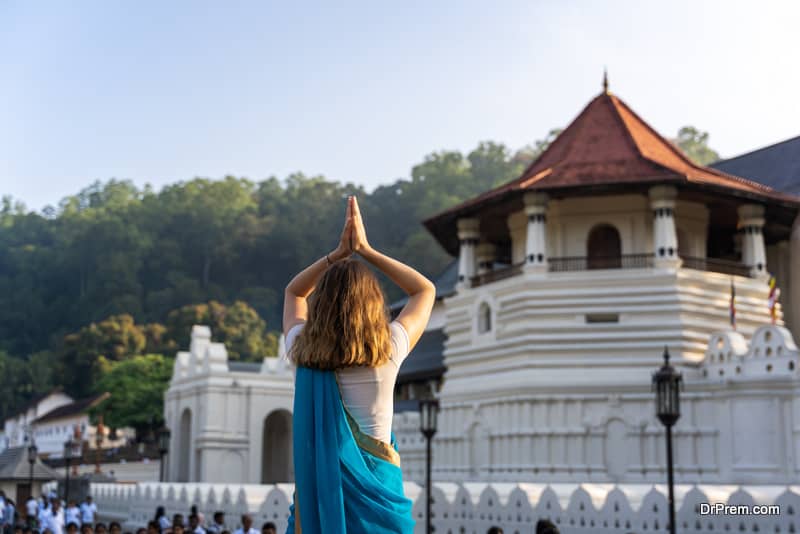
Religious tourism quite often is centered on sacred ceremonies and rituals. They are sometimes seasonal as well, and a heavy rush of pilgrims may possibly foil the tourists’ trip booking plans. The travel agents here step in with all possible solutions under a single roof and make your dream of making a religious voyage see the light of the day. Travel agents and tour operators exist with a range of efficient services on offer. They are updated with the finer details of a sacred destination. Starting from fixing the feasible dates of your sacred trip they book your transport, set up the accommodation arrangements and work out your itinerary so that you can smoothly cut through towards your target despite the presence of a frenzied crowd out for a spiritual quest.
Crowd management is a big issue though it is entrusted with the local administration, but the operators take genuine pain to push you through towards the threshold that you need to take a few more strides with the aid of a local guide to make things happen for you. In some cases, the operators establish a tie up with the local guide saving you from the hassle of finding one.
Apart from sighting the holy shrine and sacred deity, there are other attractions like museums encasing saintly relics, sacred monuments adorned with historical and cultural wonders with a religious theme.
Normally, religious tourism can take the shape of a ceremonial travel agreement or spontaneous trips to sites close by. Tour operators in many cases take the responsibility of pass port and visa processing management. This job is done with speed, exactitude and professional expertise, which would otherwise have taken a long time surmounting a series of bureaucratic procedures.
Some travel agents operate on ‘Get out and give back’ schemes. Donations to churches and sacred shrines paid by tourists are partially refunded by the agents to the tourists depending upon the size of the touring group. This is simply a marketing exercise to attract more tourists into that package.
Sometimes a security deposit is stipulated and occasionally the full trip fee is collected in advance. Other offers by tour operators include direct rebates on trip fees if the tourists guarantee repeat booking through an agent in a year. However, this rebate is generally limited to landing fare only. Staying charges in hotels do not accommodate this discount. However, booking multiple trips should be done in the same calendar year. Discounts presented by travel agents may have age group coverage like young travelers discount.
The tourists may even avail discounts when three people travel jointly and share a hotel room.To catch the huge potential of religious tourism market, the operators compete with each other in a bid to collect more dollars. The pressure enhances and the question of survival comes to the forefront.
This pushes up the quality of customer service, and the tour packages are modified with a view to enable the customer draw in more value addition in exchange for their hard-earned money. All these packaged up gradations need to fit in within the framework of an optimum fee structure. Those do not live up to the customers’ expectations earn a bad name and are simply pushed out of the battle field.
Big tour operators have a strong and well-coordinated worldwide network to cater to the needs of global tourism requirement. They set up units localized around sacred sites. This enables operational control adapted to local conditions encompassing legal, social and cultural norms, which is instrumental to designing itineraries availing the infrastructural support so that the tourists get an easy access to shrines and sacred monuments.
Besides, there are local tour operators having small time business but efficient enough to handle localized religious tourism sector on a limited scale. Inefficiency and mismanagement of logistics and failure in organizing accommodation transport and site coverage has no place in today’s competitive tour operating market.
Activities while on religious tourism
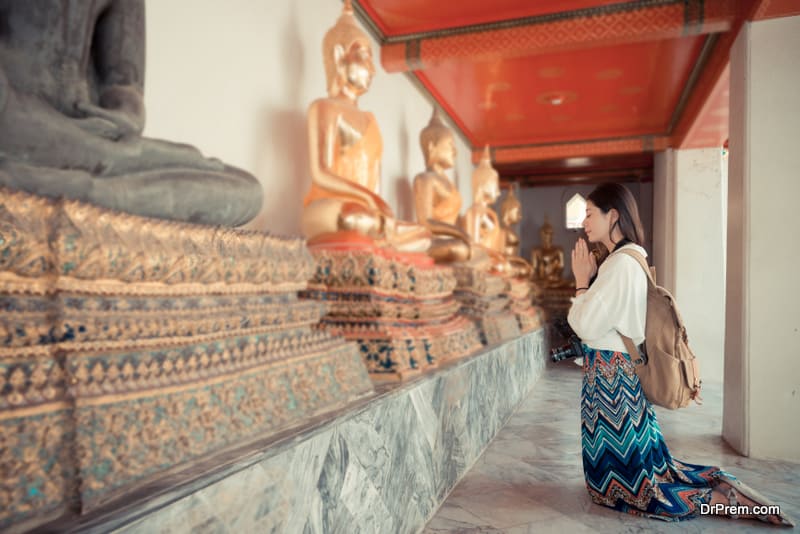
Religious tourism calls for a set of activities that may have a very delicate tone. The tourist needs to abide by certain cultural etiquettes, which are considered an integral part of the religion of the country of his visit. Violation of these sets of rules would mean hurting the local religious sentiments.
The holy sites are dotted with wonderful monuments rich with aesthetic beauty bearing the religious cultural iconic flag of the nation. So the most important activity you have ahead is to click your camera buttons and capture these exquisite pieces of architecture for good.
Amazing cathedrals, temples, gurudwaras, synagogues, mosques and pagodas are cynosure in these sacred locales. They have a rich heritage, and the legends, epics and folklores associated with these awe-inspiring structures have a massive tourist appeal. Frescos and murals exist inside and around to explain you the philosophy and religious significance.
If your senses are not trained enough, you can always rent a local guide knowledgeable enough to touch the finer details of the religious aspects. You feel enthralled and avail the rare opportunity to record the in-depth explanation of your guide in a voice recorder and take photo shots of the site.
If feasible, a movie camera would be ideal. Later, you can synchronize your running audio visual show back home and get an entire picture of the religious wonders and associated exposure you had. The sermons preached in religious establishments are sometimes psychologically powerful and philosophically thought provoking. The tourists gather in waves in order to draw in all the inspiring speeches.
Whether these orations carry a miraculous touch or sound like the gospel delivered straight from heaven is open to question. Nevertheless, they infuse in the listener with a sense of security. The tourist finds a certain level of solace in these sacred exposures be it in the shape of hymns, masses, rituals, a silent trance or any other form of communion with God with a clergy acting as an intermediary.
Sometimes relics of saints and holy men are on public display in these sites throughout the year or during a specific period with inquisitive tourists pouring in with their camera flashes flickering on and off! But with a camera in a sacred enclosure the tourist needs to be careful. In a large number of sacred sites photography is prohibited. It is against the religious etiquette and could hurt the local sentiments. Tourists need to be watchful before hitting the camera shutters!
In Goa, India, we have the legendary cathedral of Basilica of Bom (child) Jesus. It is old and yet an imposing piece of architecture respected worldwide specially throughout Christendom. It is well designed and beautiful despite the erosion caused by time. It is a classic illustration of Jesuit architecture.
Here lies the sacred body of St Francis Xavier preserved with meticulous care. It is a great crowd puller attracting tourists across the globe. It is a slice of marvel and you can activate your photographic kit preserving the picture of these splendid remains in your photo gallery.
Around sacred sites, you find carnivals, cultural shows and epics enacted demonstrating the lives of saints often laden with miracles, dance dramas and devotional songs. You get to meet different people and know about their views and reservations on different religious issues. This interaction is a wonderful experience, and it widens your own base of knowledge bordering on faith and consolidating your own religious conviction.
Your activities while on religious tour evolve your inner self. This is more of a soul-searching retreat, a sojourn unlike any other form of niche tourism, and it certainly has a beneficial impact on your mind. It makes you more focused. You view your life from a wider perspective like taking an aerial shot.
Best Practices in Religious Tourism
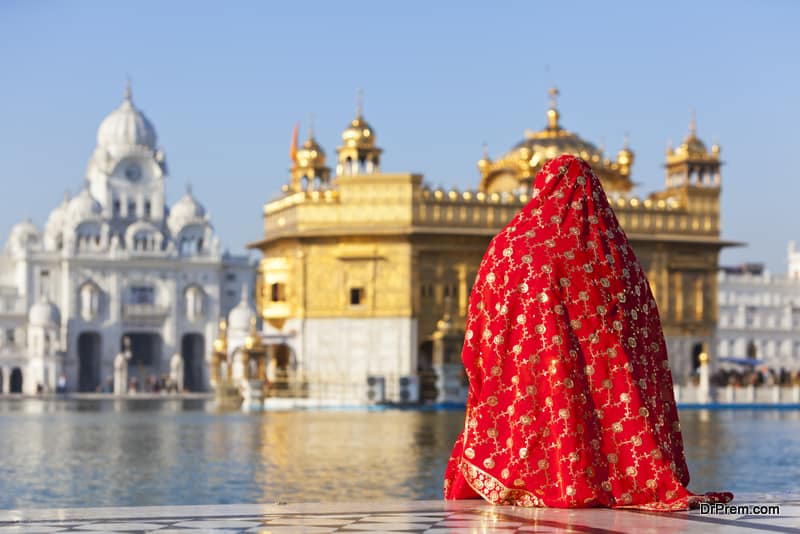
Religious tourism sites bring in considerable revenue to feed the concerned nation’s exchequer. Emphasis on maintaining sustained tourism with minimal corrosive impact on old and sacred structures and places of worship is imperative. Religion has an enormous sentimental value. The devotees and tourist having a thirst for holy voyages would certainly love to see their religious destination and places of worship well preserved touching the acceptable standards of cleanliness and existence of infrastructural support.
Need for improved sanitation

But we see a bit of paradox as in many religious sites particularly in developing countries sanitation is the first casualty. Congregation of paupers, lepers, nameless wanderers is a very common sight in and around temples in India. The sacred rivers that flow by religious sites may get polluted just a mile away with the industrial garbage and human wastes getting dumped in tons marring the sacred character of the water body not to mention about the early morning human traffic injecting metabolic end products. Administrative enforcement must swing in speedy service in order to ensure the holy sites do not lose their magic charm and turn into a place bringing up nausea and disgust overnight!
However, expunging the sacred site entirely from the desolate and paupers rolling in morbid misery would be an inhuman effort. But the standard of life of this crowd flocking around temples and mosques can definitely be improved pooling the flow of money pouring in from religious tourism. Once the light of education and financial support touches the lives of the down trodden, their habits would change and they would appreciate the need of sanitation and healthy practices. Religious sites would automatically turn cleaner leaving an excellent impression among the tourists.
Several voluntary organizations and NGO’s are working hard to set up rehabilitation centers striving to bring in improvement in the lives of beggars settling around religious sites. This is for sure a step taken in positive direction. Cleansing up the spoil that had been tarnishing the image of religious sites is vital.
Setting up improved infrastructure

Setting up infrastructural supports like hotels, effective transportation network, tourist information bureaus and grievance cells would feature as effective practices enhancing the spirit of religious tourism striking the twin objective of customer satisfaction and perking up the socio economic grade of the locals eventually making the religious site a prime tourist destination.
Growth of business around religious sites is steadily sustained with tourist dollars rolling in and as such an all round development centering on the religious destination is in the offing. Among the best practices revolving around religious tourism, tourist awareness regarding upholding the appeal of the site for the future potential tourists is perhaps the most important practice to be implemented. The tourists need to be educated of the local religious rituals, lores, beliefs and customs. Realization of factors arising from irresponsible practices like leaving behind trash in a religious place or smoking around old temples that can potentially damage the environment of the place of worship speeding up its erosion is important.
Although it is up to the tourist’s choice, donation to temple funds is always considered a good practice as it is supposed to be utilized in the maintenance of sacred monuments, cathedrals, temples and mosques especially those dilapidated structures having been revered down the ages needing immediate attention. In some countries, donation to temple funds approved by income tax authorities may make you avail rebates from your income tax. In short, the idea is to encourage those acts among tourists which sustain the charisma of the religious destination. The cooperation should come from the tourists and locals backed by the administrative machinery.
Dos and don’ts while on religious tourism
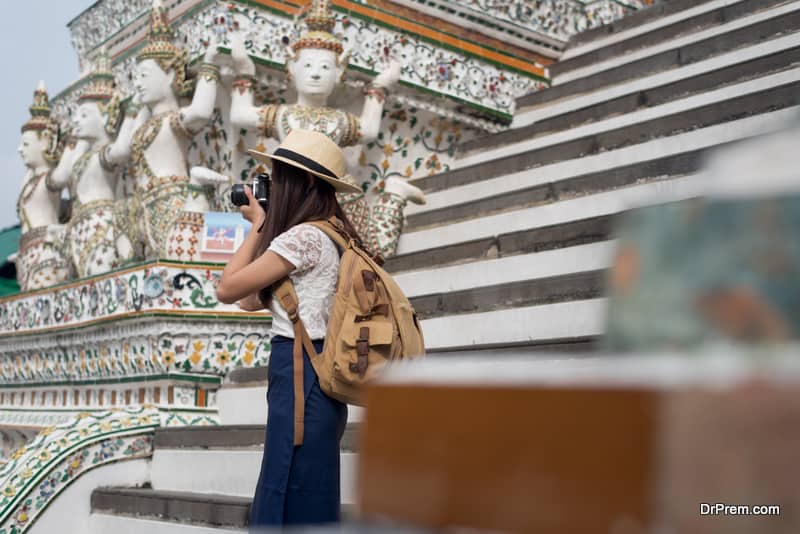
There is an array of what to do and what not to do in case of religious tourism. The basic idea is not to express or engage in any act that would be a show of disrespect to the religious site you visit.
Acts of piety and showing your regard for the religious site is always welcome. Needless to say when you are entering a temple or a mosque or similar places of worship for that matter just ensure you take your shoes off and entrust their custody with some approved custodian. While on religious tourism, one should be culturally sensitive to other religions. Their acts should not amount to religious offence.
Pork is banned in Muslim religion as is beef according to Hindu faith. Utmost care should be taken not go for pork consumption in a Muslim religious site. Same prudence must be exercised for refraining from beef intake in and around a Hindu temple.
Photography is a taboo for taking shots of temples and sacred monuments in many cases. Respect should be shown to the custom. One should refrain from hitting his camera shutter as soon as he finds himself facing one. At least he should watch and learn what the crowd around him is doing or abide by the regulations of the worship premises.
A religious site invites a large gathering. A sea of humanity including tourists, vendors, pilgrims and holy men does not complete the picture, but rogues, thugs and cheats camouflage behind this apparently harmless congregation. Be careful with your expensive belongings and never expose them so as to invite a theft.
Prudence must be exercised against the possibility of a terrorist strike. They usually target huge gatherings. If the terrorists’ motive is fed on religious fanaticism, there is no other target as good and vulnerable. Suspicious baggage and packages must be reported to the concerned authority without the slightest delay.
Leather belts, leather jackets, leather camera cases and anything made out of leather is not allowed inside a few Hindu temples. Rules must be respected to avoid local resentment.
One must be cautious enough with the sacred ‘Prasad’ offered from temples for consumption. It is usually a mix of fruits, sugar, jaggery, sacred river water and sweets. It is a part of the Hindu ritual, but the hygiene of this sacred food is open to question. You got to use your judgment before munching them down.
There will be genuine as well as fake guides promising you to show you the gates of heaven. Religion has generated stiff competition among touts. Men claim to show you the truest path to heaven. They compete fiercely with each other to do you good. You should be cautious and stay clear from these fake god men else you may land up in trouble losing money and time.
Sacred mementos vended at religious sites would be good collection objects. However, magical attributes associated with in context of healing dreadful diseases is a stupid ploy to deceive the customer. They don’t merit exorbitant prices and one should be advised against such a deal.
Long queues are a specific feature in visits to temples and places of worship. You should follow the queue and never force your way past the crowd to get the glimpse of the deity. Certain gestures amount to exhibition of respect to a deity and some may be acts of sacrilege. You may inadvertently strike a pose, which you do not know may be a show of disrespect to the place of worship. Educate yourself about the customs in vogue so as not to invite local resentment by your apparently civilized manners. What is good for you may be not as good when you are in an alien society with religion being a sensitive issue.
Things to do post religious tourism

It is not that after completing a religious tourism you start noticing rings of halos around the idols and images of saints and deities. Neither do they visit you in your dreams. The religious voyage has brought changes in you, and you feel there is lot more to do and achieve in your life.
One positive indication is that your respect for other faiths mounts as well. A visit to a holy site be it your own religion or from an alien faith widens your mental horizon. It’s like cleansing your inner core, and you start finding meaning in certain aspects of life which did not sound significant previously.
Visits to religious sites inspire you to build a place of worship in your own house or renovate an existing one. This enhances the aesthetic value of your residence instilling a certain level of sacred atmosphere. This is good and gives you a feeling of tranquility in your mind. Amid our hectic schedule of our regular rat race and struggle through life, it is a welcome departure if you can spend an hour in your private worship room back home.
It eases out tensions, and the religious trip that you have just finished may inspire you to do this act of rendezvous with god, a much needed modification that is a tonic for both our mind and body. You do not stop this benefits derived in your personal life. These may well be communicated to your friends inspiring them with the flame of going for a religious tourism.
Religious tourism have given you an opportunity to procure simple but wonderful pieces of sacred value. Photos and sculptures of deities, incense sticks, pendants, holy texts, prasads (sacred and dry food items considered an indispensible part of the sacred ritual offerings), which you distribute among your neighbors, friends and relatives foster a good fellow feeling resulting in an all round harmony. This act brings you closer to the people with whom you interact inspiring them to make a visit as well to those religious sites.
Of course, the wonderful snaps that you have taken of the temples, cathedrals, mosques and gurudwaras can be displayed in your living room making them appealing and beautiful. Religious tourism makes you more accomplished than before. You know the entire voyage and the hurdles connected to it. The itinerary has been mapped out in your mind, and you are better prepared to undertake the next trip.
With the knowledge of availability of accommodations at reasonable prices, your selection for hotels and lodges in your next trip becomes more fact based. The choice of transportation becomes more focused in your next trip.
Post religious tourism, you need to do a thorough exercise and revision of what you have learned from your trip and fix them as finite guidelines for your future trips and for your friends if they are undertaking one. Your kids must have religion and history as subjects in their curriculum. Live exposure to religious sites makes them more acquainted with their subjects.
They have a field experience and can use their cameras to capture shots revealing a lot of information on their specific features of temples and monuments of worship. Their academic interests literally shoot up when they compare what they see for real with what they have learned in their books. This is definitely educative and an important piece of activity post religious tourism.
Your post religious tourism activities take an interesting turn with some innovation. You may capture the entire trip in your movie camera; especially those which involve ramble across steep terrain and impenetrable forests or may be across hostile barren lands with the punishing sun beating down with its scorching blaze. Back breaking obstacles await you before you eventually make it to the gates of heaven.
There are thousands of elderly men and women with a devout bend of mind towards religion. There are millions of physically challenged pious souls. They have a burning desire to visit these sacred sites, but owing to age and physical inability their desires largely remain unfulfilled. Live running documentary caught in your movie camera could be a substitute for them. They simply relish the spectacle, and you stand to win their blessings.
Countries promoting religious tourism
To promote religious tourism, many countries have come forward pooling their resources with honest efforts and widespread media coverage drawing the world’s attention towards its wealth of sacred monuments enriched with traditional and cultural values. It has successfully showcased the religious sites as prominent spiritual centers arousing interest among tourists. Here is an enlistment of few nations exercising an all out effort to market religious tourism:
Santo Domingo, Dominican Republic:
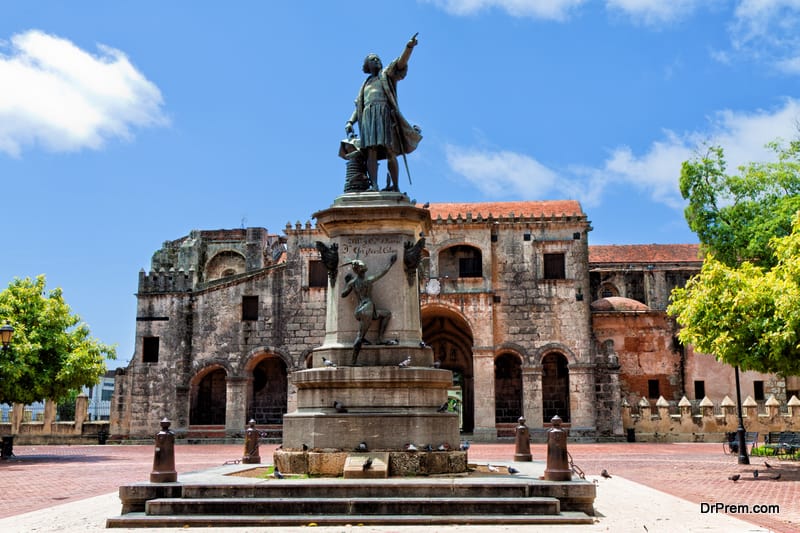
This age-old cathedral, probably the oldest in America, is situated in a square bubbling with activities. Every effort has been initiated by the Catholic spiritual heads to spread the religious implication of this cathedral across the globe. They are putting untiring efforts to bring this site under limelight promoting it as a primary place with a religious history of more than 500 years.
Acting in consortium with the tourism department, the Archdiocese has drawn up a sacred itinerary guiding tourists touching 16 churches, monasteries, hospitals and convents. These landmarks are basically the groundwork that has paved the progress of this nation and made it become the first city in the new world. An amazing museum features the region’s history and tradition, and there is an all round focus to ensure that this country receives worldwide attention in religious circles.
Greece

Greece has taken a commendable promotional drive to popularize religious tourism. It has planned delegating its religious tourism professionals to Shanghai in China. The initiative has been taken by the Synod office of the Grecian church responsible for promoting sacred trips.
The church has launched an effective policy to draw tourists from abroad to its monasteries and sacred monuments. A set of procedures has been laid and deals signed between the church and the ministry of tourism in order to upgrade religious tourism in Greece.
Jordan
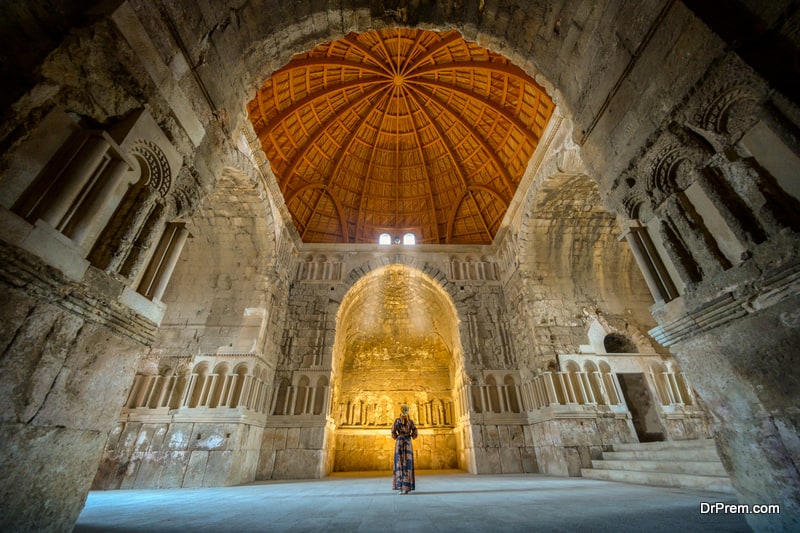
Jordan has launched a promotional drive targeting countries like Indonesia and Malaysia. The campaign is concentrated on drawing Muslim tourists in particular propagating the notion that Jordan is an important religious portal for sacred Muslim monuments. A number of promotional drives have been adopted specially offering annual Haj pilgrimage packages extending their tour itinerary afterwards to Jordan and Palestine which bear pronounced Islamic heritage.
Italy
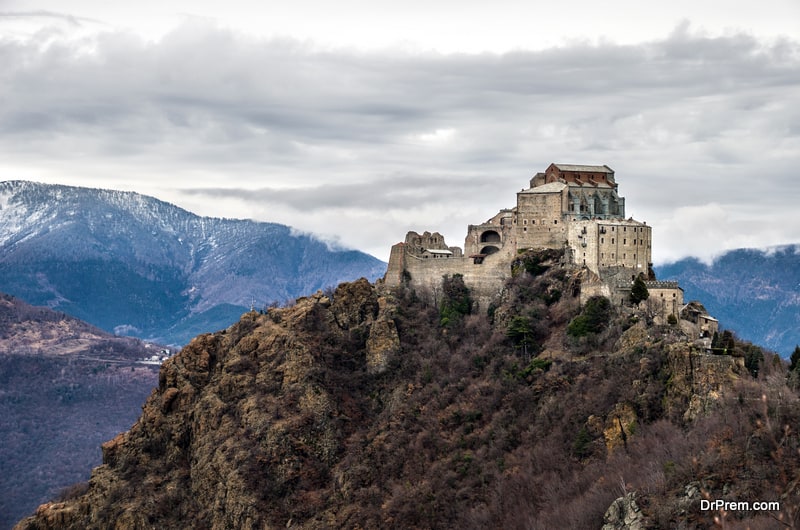
Italy has launched a massive promotional hype for making religious tourism popular worldwide. The annual visit of tourists to Italian sacred monuments and shrines has been rising steadily over the years, a clear indication of the nation’s result oriented promotional drives.
The cathedrals, monasteries and spiritual sanctuaries are well maintained, and utmost care is put on keeping these ancient structures neat and gleaming by the use of the latest technological knowhow. Side by side, the ancient heritage which reverberates with an awe inspiring and imposing sacred theme is kept alive making Italy a seat of devout Christian faith.
The famous monuments of the Abbey of St Michael, the sanctuary of Madonna Della Corona, the Quadrilateral of faith close to Turin are some of the glowing examples of emphasis laid by Italy’s tourism promotion council in marketing religious tourism making this country an ultimate target for those in quest of spiritual bliss of Roman Catholic faith.
Thailand
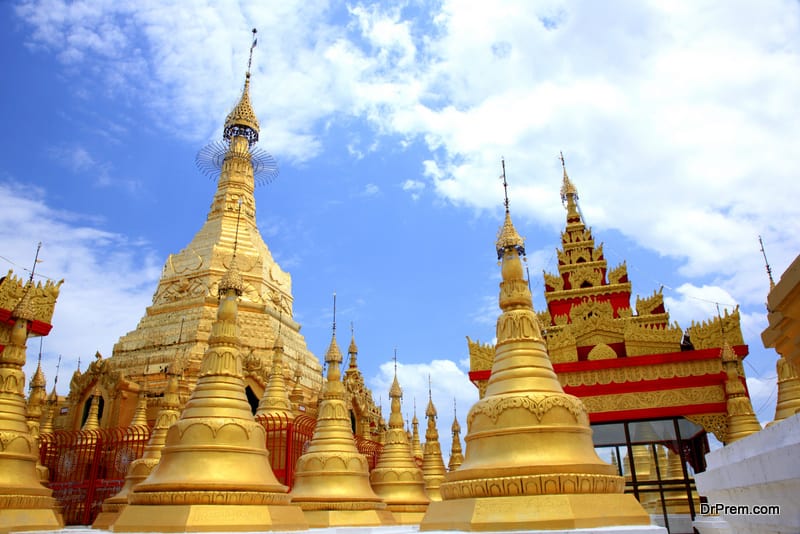
A majority of Thai people follow Theravada Buddhism and they have great respect for Buddhism which is rather looked upon as a philosophy, a way of life. The monks have a revered position in society, and the Thai people like to discuss with great enthusiasm the amazing character of their religion with the outsiders.
Their religion mingled with Hinduism is considered very tolerant that traces its way back in history at some point of time. The Thai pagodas and architecture have religious themes engraved, and depictions from the life of Lord Buddha are simply marvelous. The Thai tourism board is exactly out on a promotional drive to draw to this wonderful aspect of Thai religion. The awesome cuisine is an added bonus to lure the tourists and marketed to enhance their count of annual visits.
Precautions and preventions in religious tourism
Religion is a super sensitive issue. Precautionary measures to be taken in religious tourism are many. Faith has a powerful impact on one’s mind where rationality and logical thought process might be causalities.
Be aware of self-proclaimed god men and guides
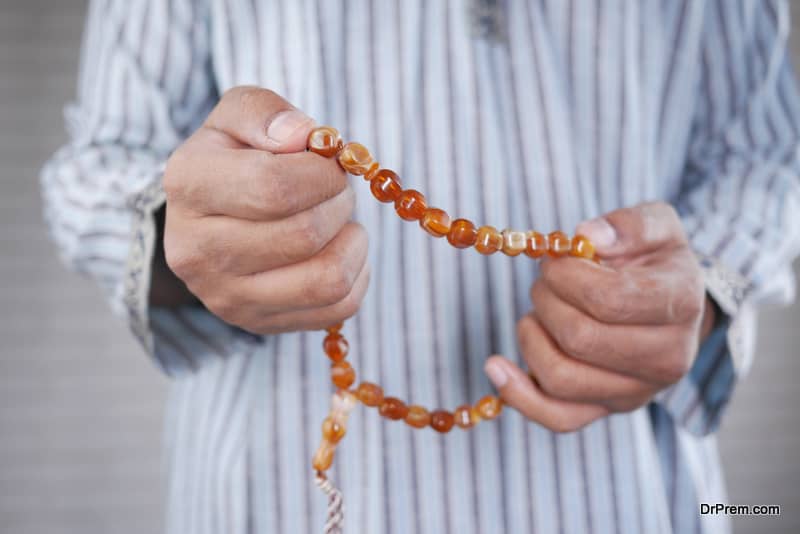
Tourists often blindly rely on self proclaimed god men and unscrupulous guides who lead you to disaster. They are cunning and plan their attack on your psychology, which is often a vulnerable area. These unscrupulous mediators who promise you to show you the gates of heaven are often knowledgeable.
They can read the human mind very well. Their art of speech are quite convincing and firm. They will speak in a very aggressive style with a mix of lies to confuse you. They are least bothered about your wellbeing or religious accomplishments. It is your money, which these thugs are after.
Once you entrust them with all your secret information considering them to be your savior hailing directly from paradise as god’s messenger, they have their kill. They simply rob you clean, and you might have exposed yourself to further damage coming in a more nightmarish shape if you happen to be a lady.
Stay safe from thugs and pickpockets
Religious sites draw in millions giving ample opportunity to thugs, crooks and pickpockets to take a safe cover before striking for a kill. It is advisable not to exhibit your valuables, money and camera amid thick crowd to invite a theft.
Check the hygiene standard of ‘Prasad’ before you consume

You should take enough precautionary measures with respect to consuming the holy ‘Prasad’ served in many Indian temples along with a spoonful of sacred water from the river Ganges. ‘Prasad’ is usually a mix of fruits and sweets, and in temples located in southern parts of India it is usually rice with milk.
Whatever be the constituent of the sacred food dished out by temples, its hygiene is not infallible. The cleanliness of the sacred river water is also open to question. Hence, it is advisable you think twice before taking a sip at the holy water or a nip at the holy ‘Prasad’. It will be wise to be choosy on this temple food issue and spare yourself from falling sick upon consumption of the sacred Prasad.
Be courteous with offerings
Etiquettes and show of respect is an important part of religious tourism. While entering temples care should be taken to see your footwear is removed and kept out of temple premises. Usually there are custodians at the temple entrance who earn a living by guarding your footwear in exchange for a nominal fee.
Keep yourself aware of the poses and gestures that indicate your show of reverence for the sacred site and for the deity inside the temple. Inadvertently you may show a gesture which is polite and respectful by your cultural norms, but it might be quite rude as per local standards.
Be sure of photography rules
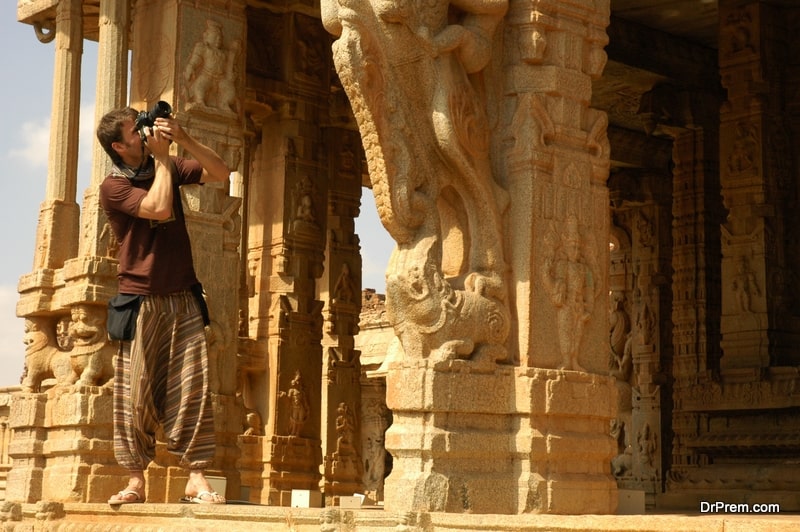
Taking photographs of sacred idols, monks and priests may not be approved by local customs. Be aware of this issue not to invite misunderstanding and local resentment.
Do not pull out any part of an ancient ruin
Some sacred monuments may be in ruins with ancient brickwork with engravings hanging loose from the main structure. This may instill a little temptation in you to sneak and pull off a block for your private collection of ancient artifacts of artistic value. This would amount to a criminal offence gross enough to put you behind the bars. Act of vandalism against an alien religious work of art would be unlawful enough to justify even a drop of compassion. You will land up in real trouble.
Do not litter

Equally important will be to ensure not to litter the place of worship with food leftovers, containers, empty bottles and other trash. If access to a sacred location needs you fall in a queue, be patient and follow the crowd and wait your turn. Haste and disappointment over slow progress of the proceedings would land you nowhere.
Popular Religious Tourism Destinations
Best sites and Top Destinations for religious tourism in the world
The sacred locations around the world have always attracted tourists individually or in groups with a target of spiritual attainment. The focus has shifted from material pleasure to religious pilgrimage with a mission of self-actualization and to be very near to the supreme sacred entity.
Some of the famous religious tourism sites are enlisted hereunder:
Ganga Varanasi

In India, Kumbh Mela, held after every twelve years at the confluence of the three sacred rivers the Ganga, Jamuna and the Saraswati is considered one of the holiest of religious gatherings of its kind according the Hindu religious rituals. This mela or sacred carnival is historical, and it sees an awesome mix of people from all walks of lives. The affluent, the poor, the pauper, the saints and sanyasis (specifically the Naga sanyasis go bare bodied as they have denounced material life and go in search of higher goals of life bordering on supernatural) pour in from all corners of India.
They have done so over past and the start date seems to be as old as the Hindu religion itself when the gods (devatas) and demons (ashuras) resided on earth according to Hindu mythology. In a nutshell, it is so old that the origin of this religious gathering is lost in history. It is the most important event in the lives of saints and sadhus. The Hindus with unshakable faith, believes visiting this mela and having a glimpse of the sadhus, sanyasis and holy men would absolve them of their sins. This is an age old belief carried down the generations. This grand religious mela is held in four sacred places in Allahabad, Nasik, Ujjain and Haridwar.
The legend goes like this that the gods hunted down the demons for twelve days and nights. Dollops of sacred amrita (ambrosia) poured down from heaven over these four places making them sanctified. It is the largest Hindu spiritual gathering in the world observed down the ages where a sea of devotees take holy dips in the sacred rivers. The examples cited are clear indications that religious tourism is not a recent practice. It is historical that started almost when the human race came into existence.
Mecca, Saudi Arabia:

This is the holiest city placed at the helm of Islam. Annual sacred Haj pilgrimage to the holy city of Mecca touches almost three million. This is the birth place of Prophet Hazrat Muhammad in 570. The prophet brought Mecca under his dominance in 630 destroying and driving away all the pagans declaring it as a seat of Muslim pilgrimage where there exists one and only Allah and Hazrat Muhammad is his prophet. The holiest of holy Muslim site in Mecca is the Kaba, the cubical structure to which every Muslim faces during his/her prayer wherever might be his/her location in the world.
Lhasa, Tibet:
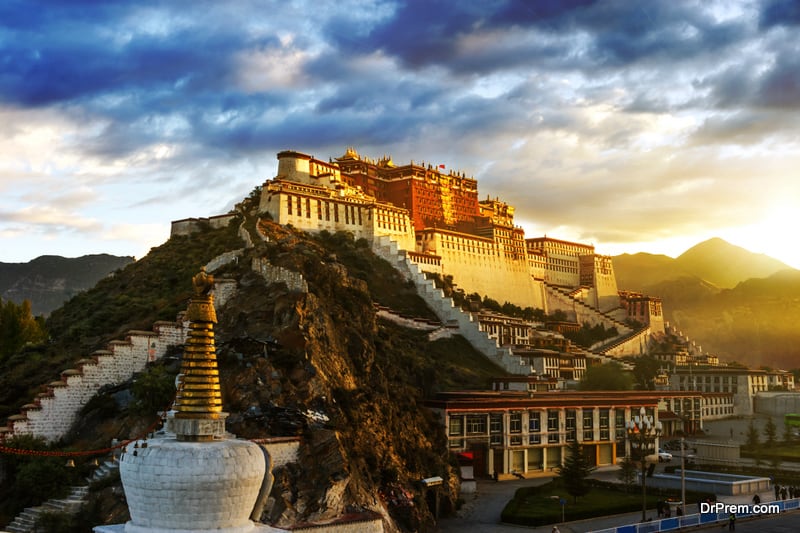
The sacred city of Lhasa is the home to the political and spiritual leader of Tibetan Buddhism, namely the generation of Dalai Lamas since 1600 till Chinese invasion in 1959 when the 14 Dalai Lamas fled the country for a refuge in India. The city of mammoth historical and Buddhist religious importance features UNESCO world heritage sites like Jokhang temple, Norbulingka, Potala palace, Sera and Drepung monasteries. Pilgrims to Lhasa touches a million every year.
Bethlehem

This ancient Jewish city has biblical significance centering on the birth and stories of Jesus Christ. According to the Biblical Testaments, it is the most sacred Christian site. The town of Bethlehem is located six miles outskirts of Jerusalem and inhabited by 30000 residents. This 2000- year- old holy city is also the birthplace of David, the crowned king of Israel. The city is thronged by waves of Christian pilgrims during Christmas and Easter, and the church of Nativity is a hot spot as it is thought to be the birthplace of the Lord.
Vatican City, Rome
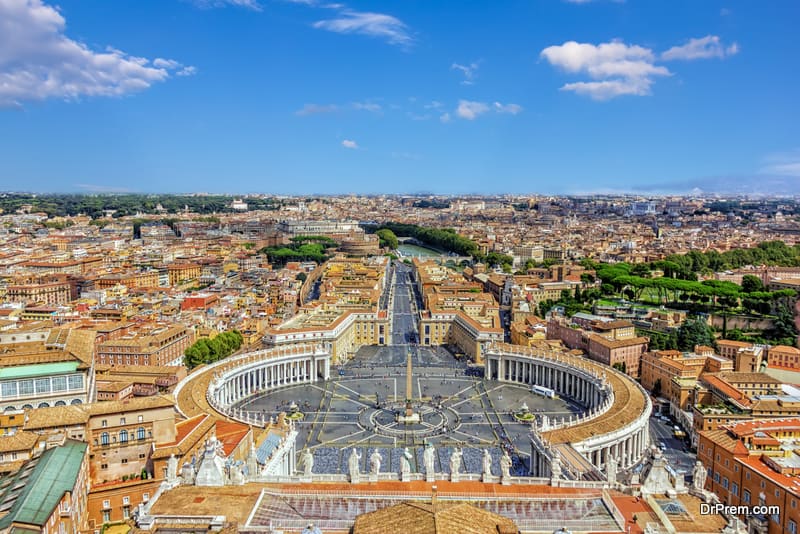
Vatican City located right in the heart of the city of Rome, Italy is the head quarter to Central Authority of the Roman Catholic Church. Both the area and population of Vatican is small spreading over just 110-acre housing only 900 people. Nevertheless, its religious significance is massive in terms of Catholic faith. It is the residential quarter of Pope, the apex person in the Roman Catholic religious and administrative body since 1377. Vatican City features many interesting sites for tourist draw like the Vatican library, St Peters Basilica, Vatican Museum and Sistine Chapel.
Haifa, Israel

This religious site is the seat of the Bahai faith, which preaches the philosophy of unity, love and divine knowledge and seeks to blend all people belonging to diverse races and culture into one single religion with a common mission. Global unity is the essence of this religion and preached by Prophet Baha Ulla as the most recent independent and religious thinker following the footsteps of lord Krishna, Buddha, Moses, Mohammad and Jesus. Located on the slopes of Mt Carmel and facing the Mediterranean Sea, it is just 56 miles off Tel Aviv!
The Vatican, St Peters Basilica
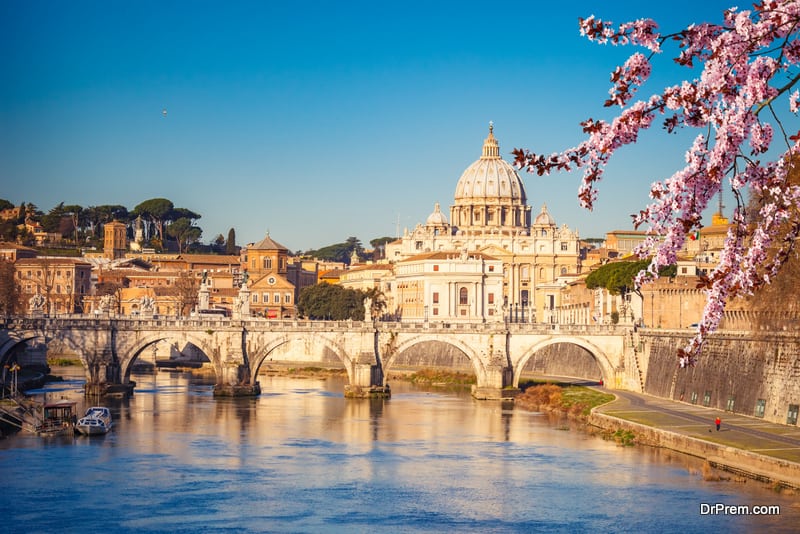
This is the most important and halo endowed site in the entire Christendom. This holy city is also the official residence of the Pope occupying the helm of the priestly hierarchy in Christianity. It is here where the revered Sistine chapel stands. A number of museums exhibiting relics and artifacts of Biblical significance exist. The Basilica of St Peters encases the burial crypt of the first Pope just beneath the key altar. UNESCO has honored it as the World Heritage site and declared it the largest sacred structure with an enormous global fame. Every year a huge number of tourists visit the Vatican, and the figure hits an astounding range of 5000 to 20000 per day!
Our Lady of Guadalupe Shrine, Mexico City

This Shrine located northwest of Mexico City is a celebrated Catholic site. Folk lore goes that way back in 1531 Virgin Mary appeared before a poor farmer named Juan Diego on a hillock called Tepeyac. The lore runs that the face of Virgin Mary was impressed on the poor man’s cloak by the intervention of some divine magical power. As a sacred relic, the cloak still hangs over an altar built exactly on the site where Diego had the holy vision of our Lady. Diego was reportedly canonized by Pope John Paul II back in 2002 though there is some dispute over the fact. This religious site is visited by over 20 million tourists every year and is a prominent religious tourism destination.
Sabarimala, Kerala, India
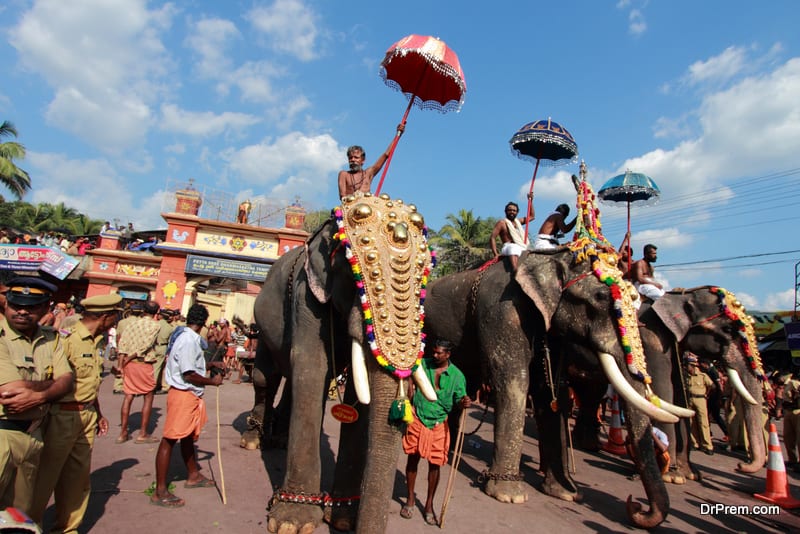
This is a famous religious destination for the Hindus nestled in the Western Ghats mountain range in the state of Kerala in India. The Sastha temple, the residing place of Lord Ayyappa, is the main attraction of this destination that Hindus especially the South Indians long for a visit. It is covered with dense forest grown along a mountainous country where the Lord after vanquishing a powerful and malicious demon Mahishi went into deep meditation. Pilgrims visit this holy site from November to January facing unfriendly terrain and jungle thick with wildlife. The pilgrims observe strict abstinence from tobacco and alcohol and other worldly pleasures during the pilgrimage season. Annual tourist visits hit over 10 million!
Grotto of Lourdes, France

Bernadette Soubirous, a 14 year old country lass, had a glimpse of the specter of Virgin Mary back in 1858 in a grotto just at the outskirts of the rural settlement of Lourdes in south western part of France. Post this miraculous visit, she had 17 more repeated visions as goes the legend. The water fizzing out of the grotto is considered sacred and is believed to be blessed with a healing touch. This magical phenomenon has made this place religiously very appealing drawing in over 5 million religious enthusiasts every year.
Tomb of Imam Reza, Mashad, Iran

This is a sacred site in Iran and a place of great reverence among Shia Muslims. This site is the holiest city in Iran and termed as a ‘palace of martyrdom dedicated to the eighth Shiite Imam, Reza who is supposed to have a direct blood lineage with Prophet Mohammad. The Imam’s tomb is awe inspiring and is a big draw among tourists. Annual pilgrimage touches a figure ranging from 12 to 18 million visitors.
Jerusalem, Israel

This is the very heartland that sees Judaism, Christianity and Islam exist as seats of their spiritual hub. The Church of holy Sepulchre, the Mosque of Al Aqsa and the Western Wall are the famous religious structures representing three prime religions to the enchantment of tourists pouring in from all over the world. Annual visit of tourists to this holy city is estimated around two million.
Meiji Jingu, Tokyo

This is an amazing Shinto Shrine located in a forested region in the Shibuya province of Tokyo. It is dedicated to the emperors Meiji and Shoken and is the most frequented religious site in the island nation with annual visits of over three million tourists each year.
Mount Tai, Taishan, China

This holy mount is located north of Taiwan city in Shandong province of China having its shores washed by the sea. It is a seat of Taoism and is one among the five most ancient and sacred mountains. This site is historical having its roots running back to the reign of Zhou monarchs. At the base of the mountain stands this revered Taishan temple, which is declared a World Heritage site by UNESCO in 1987. A long flight of 7000 stone steps climb takes you to the Azure Clouds Temple at the summit. This sacred site sees around seven million visitors every year.
Jasna Gora, Czestochowa, Poland:
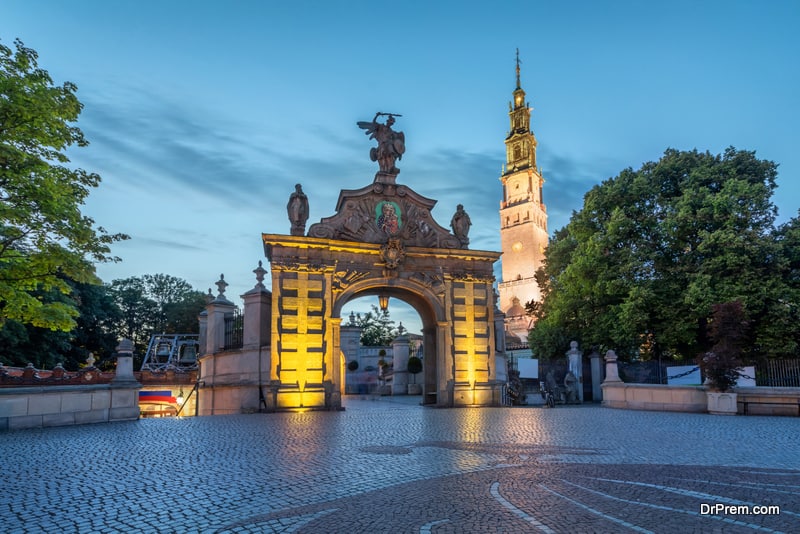
This holy monastery is located in the central part of Poland. This a sacred Pauline religious structure where stands the black Madonna with supposedly divine powers. Pilgrims set the holy voyage on foot to reach this destination. On the Assumption Day and during Jasna Gora harvest home celebration, the visit reaches its peak with heavy rush. Annual tourist count ranges between 4 – 5 million visitors.
Destinations that offer safe religious tourism for senior citizens
Senior citizens prefer religious tourism, as they believe that spirituality is important during the advanced phase of age and life. Many countries offer religious tourism to people from each corner of the globe. Mecca, Lourdes, Vatican, and Jerusalem are some of the major religious tourism destinations in the world. These destinations are visited by millions every year. Visitors also include kids and senior citizens who require special care during travel. It often includes safe food, lodging facilities, travel facilities, pilgrim safety, and more.
Safety and security is the major thing to consider in the case of senior citizens. It is vital to plan everything properly and systematically. It is also important to make sure that your chosen religious destination offer complete safety and security to old age people. Following we have some of the major religious tourism destination that offer complete safety and security to people, especially old age people.
Mecca
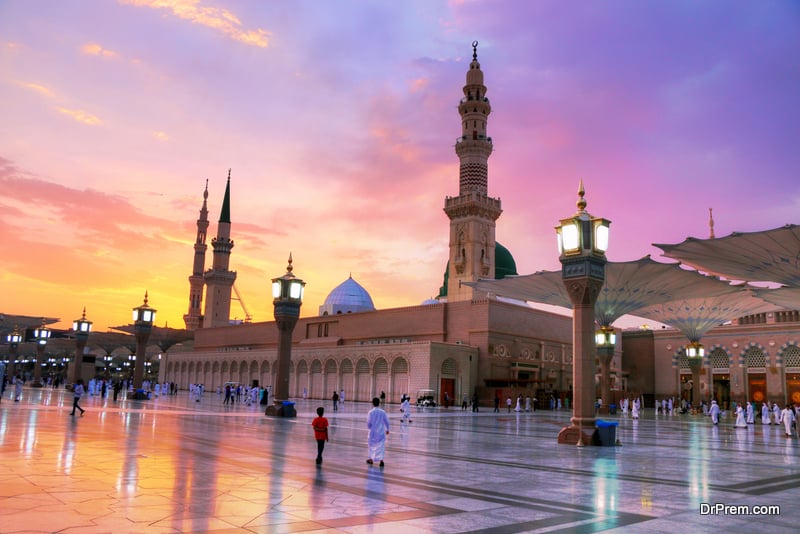
More than 13 million Muslims visit Mecca every year. It is one of the most visited pilgrimage sites in the world, and Muslims generally visit the place especially during the final month of the Islamic calendar. Senior citizens are amongst the major group that visit the place and they require special care and safety during the journey. Many tourism facility providers of Saudi Arabia offer special religious services for senior citizens. This includes quality lodging facilities, safety, and medical facilities. The Government offer special terminal facilities to accommodate people, especially senior citizens.
Lourdes, France
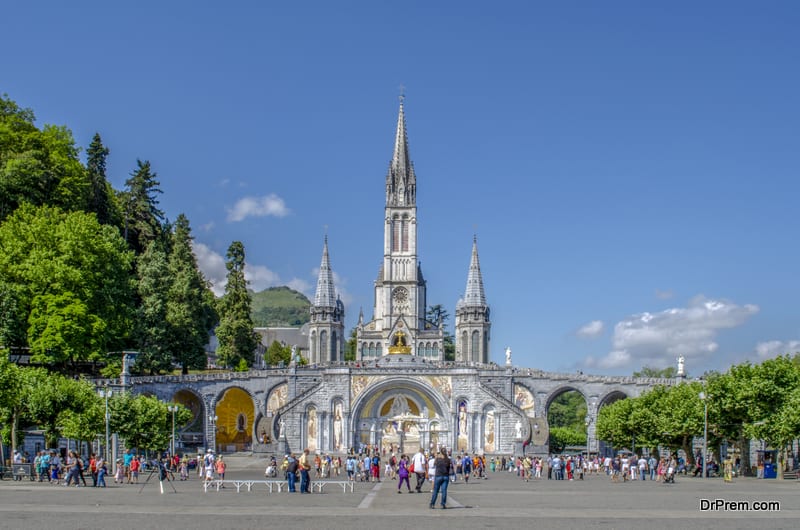
Lourdes is a major place of Roman Catholic pilgrimage and it welcomes millions of pilgrims every year. The destination offer top class facilities to their guests, especially old people. Almost all hotels of the destination provide medical facilities and wheel chairs to senior citizens and people who cannot walk. Apart from this, they also offer special guided tours for senior citizens. They provide special medical care and emergency medical facility to patients or people who need it.
Vatican
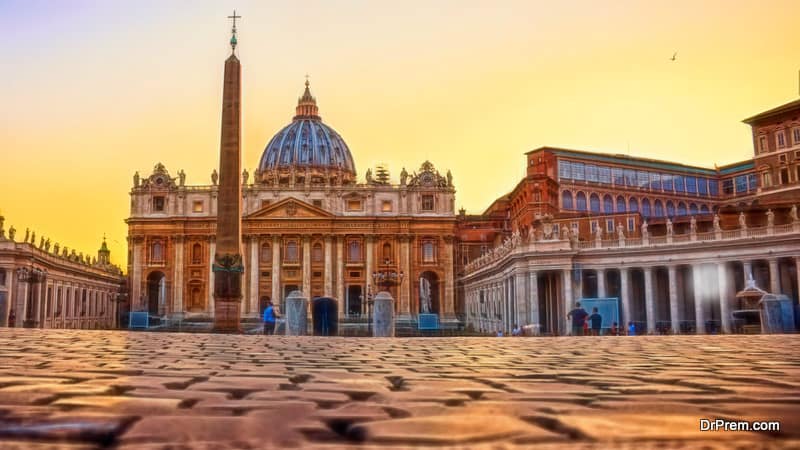
Vatican is the center of the Roman Catholic faith and a religious tourism destination. Many hotels and tourism facility providers offer tours packages on heavy discounts to senior citizens. They also ensure the safety and security of old people. They offer medical facilities to pilgrims according to their health conditions. The only thing they need to do to carry their ID cards to prove their age. They can ask for available discounts in hotels and flight bookings.
Jerusalem

The city is visited by more than two million pilgrims every year. It is the holy and important location for Christianity, Islam, and Judaism. Thousands of senior citizens visit the destination to connect themselves to the God. The government of the country tries to provide safety services to these people. Visitors can visit the place without any fear and worry. There are special lodging facilities and traveling facilities that ensure the safety and security of tourists, especially senior citizens.
Machu Picchu
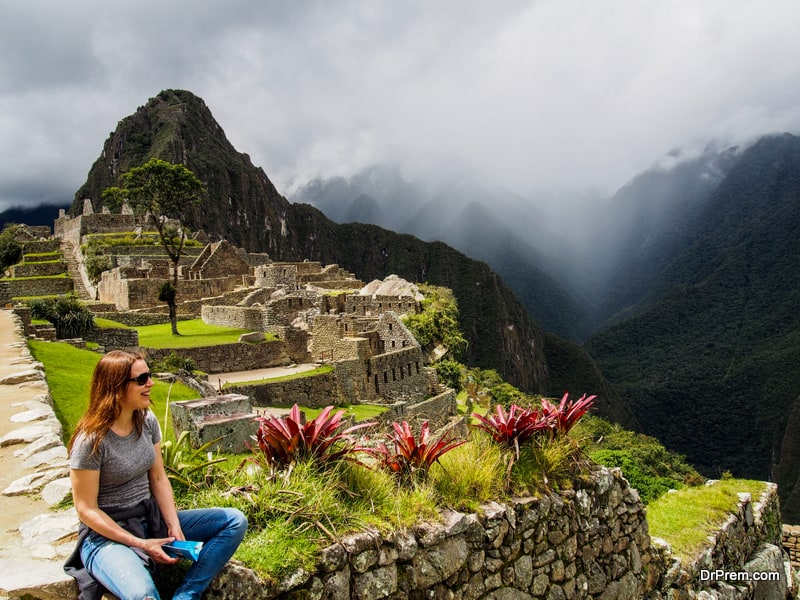
Machu Picchu is known as a great historical site but it is an Incan pilgrimage site. It was privately owned by the emperor Pachacuti and it is visited by many people. They visit the place to connect themselves to God. The tourism authority offer special travel package for old age people to ensure their safety and security. It includes travel facility, food, accommodation, and medical facilities.




